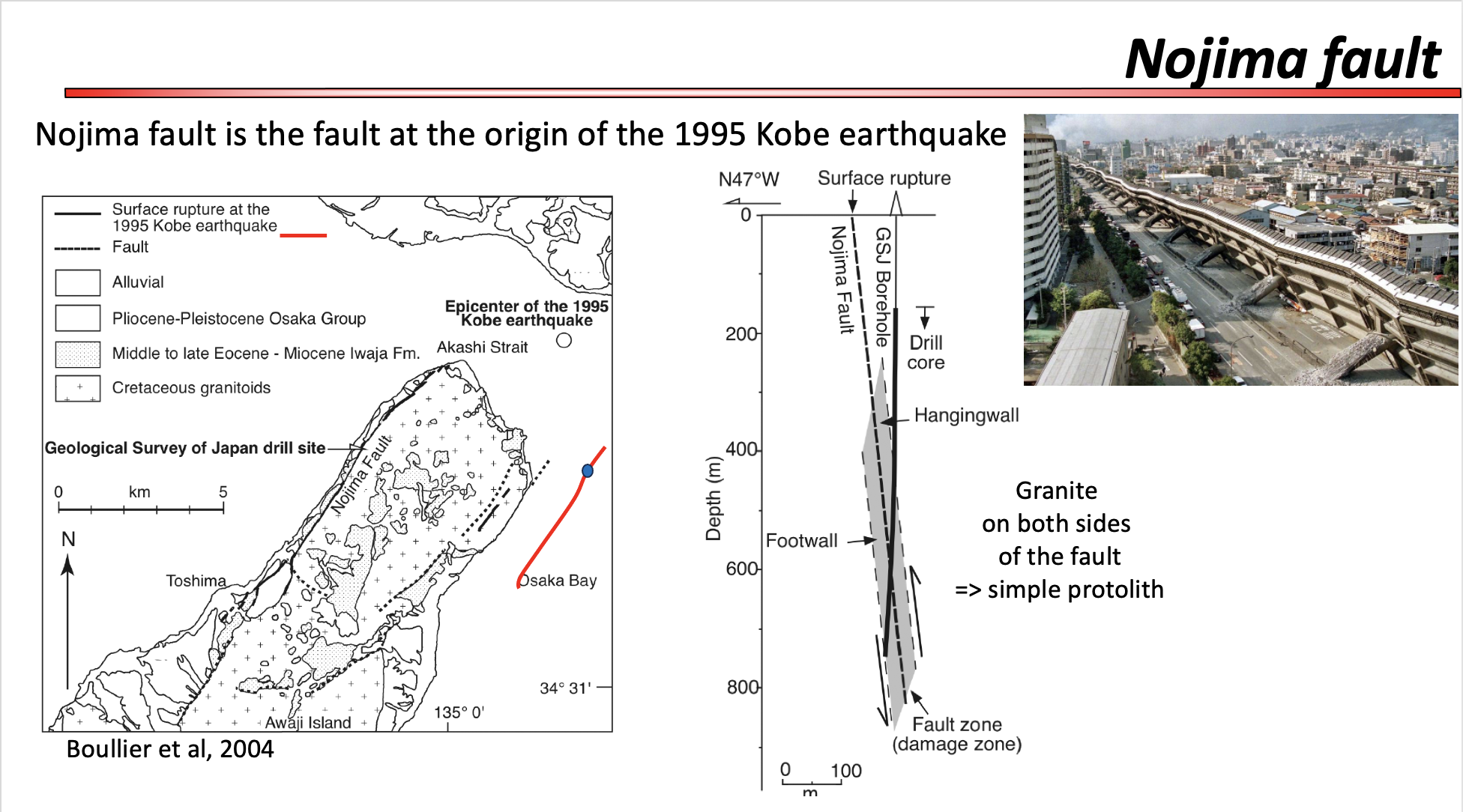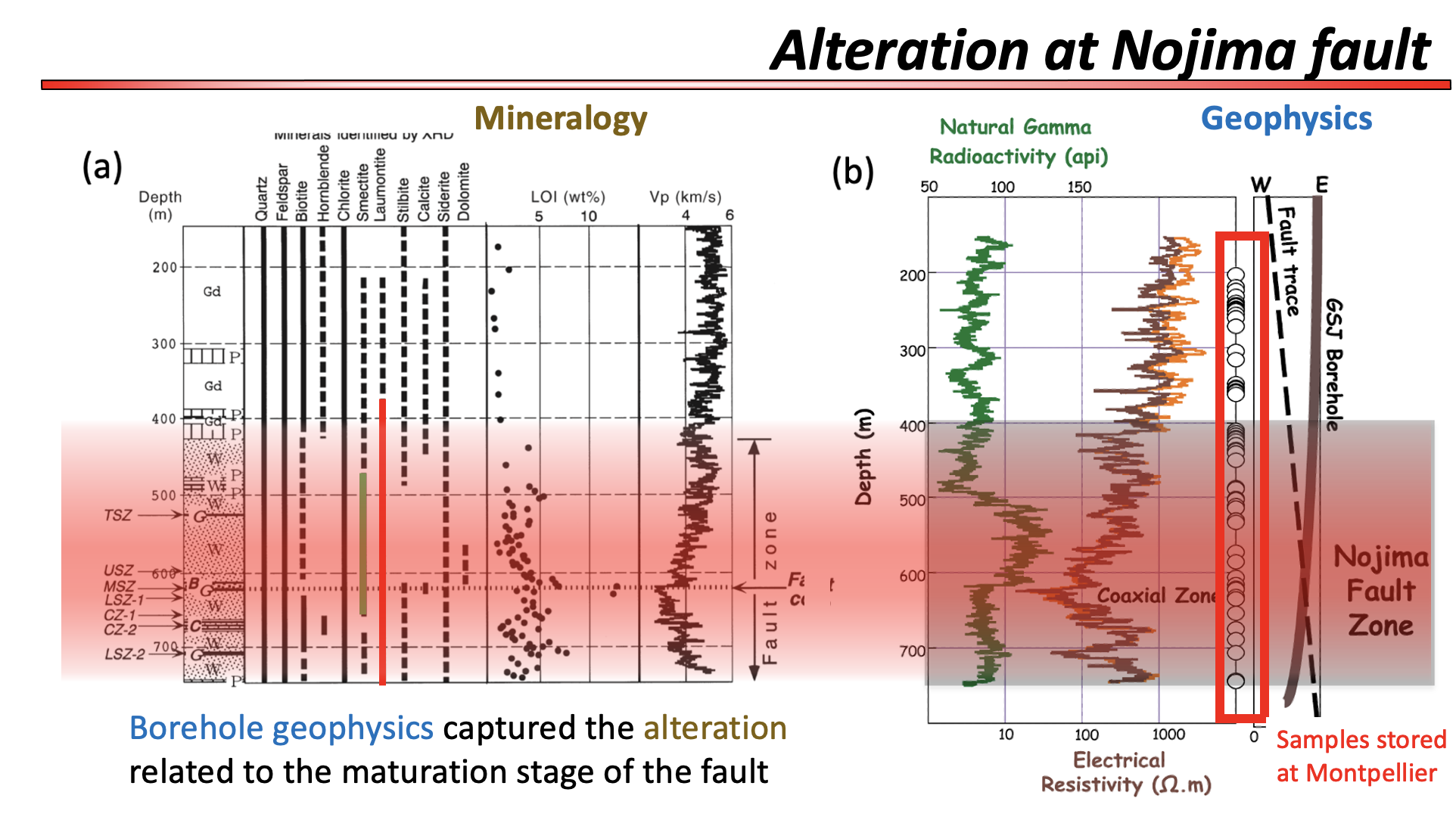Nojima fault
After the devastating M w 7.3 Nanbu-Kobe earthquake of 1995, a 750 m deep borehole was drilled to the Nojima fault core at 625 m, less than 1 year after the earthquake. This borehole was drilled at the Hirabayashi site by the GSJ (Geological Survey of Japan).
Continuous coring and borehole logging showed the granodiorite protolith experienced several stages of alteration : (1) a pre-faulting alteration at T>270°C generating pervasive chloritization, (2) a fault-related alteration that deposited laumontite (Ca-rich zeolite) and smectite at T>150°C at the bottom 300 m (i.e. a 30m thick zone, given the well trajectory) and (3) recent deposition of calcite and siderite, that heals the fault after earthquakes.
We aim at characterizing and reproducing this second stage of alteration, concomitant with the maturation of the fault.
Forty whole-round cores coming from the Hirabayashi borehole that cross-cut the Nojima fault will used in that study. They are currently stored at Geosciences Montpellier and will be further processed with a multi-disciplinary approach to determine a continuous alteration profile along the borehole.
- First, each core will be scanned with X-ray CT to assess its microstructure. Measurements of complex resistivity of the sample will allow to relate alteration intensity to the electrical resistivity. Other proxies of alteration could be calibrated on samples, like magnetic susceptibility, PMMA, shortwave infrared (SWIR) spectroscopy and CEC. Sonic velocity will also be recorded.
- XRD and optical/SEM description will allow assessing the abundance of secondary minerals forming the alteration. We aim to find petrophysical proxies for the intensity of alteration of the cores.
- These proxies will be quantified along the whole borehole using borehole logs.
Updated on 1er avril 2024





